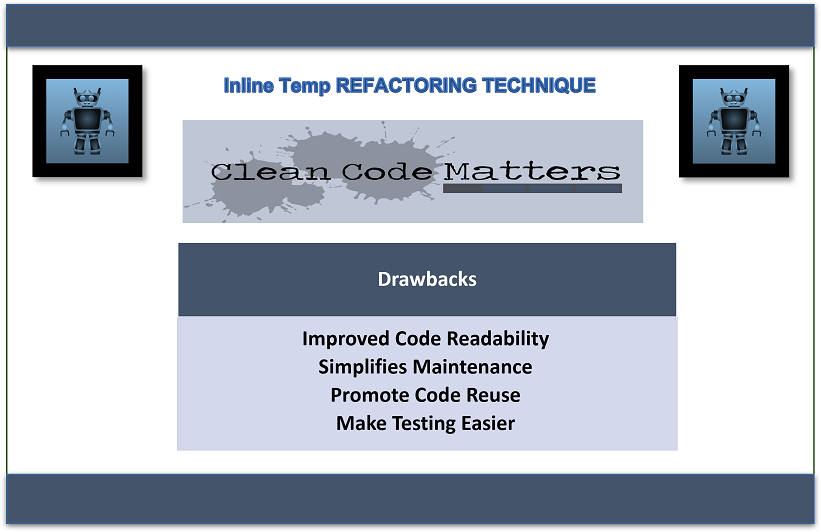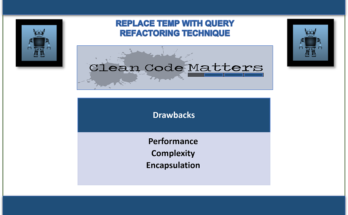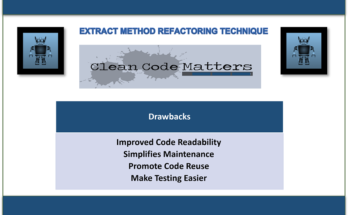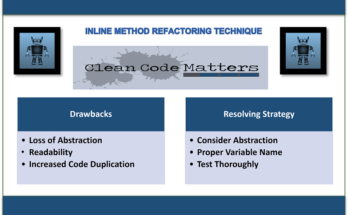By eliminating pointless temporary variables, the inline temp refactoring technique is a software development technique used to streamline and clarify code. It entails replacing a temporary variable directly in the code with its appropriate expression or value.
Ways to Apply Inline Temp Technique
An explanation of the inline temp refactoring process’s steps is provided below:
- Find the temporary variable that holds the expression’s output.
- A single use of the variable should be verified.
- Replace all references to the variable with the value of the expression if it is only used once.
- Don’t replace a variable if it is used several times.

Problem
There is a temporary variable you can only use to store the result of a plain expression.
Before Refactoring
def calculate_total_price(quantity, price):
total = quantity * price
tax_rate = 0.1
tax_amount = total * tax_rate
final_price = total + tax_amount
return final_price
Solution
Instead of using the reference variable, use the expression itself.
After Refactoring
def calculate_total_price(quantity, price):
total = quantity * price
tax_rate = 0.1
return total + (total * tax_rate)
In this case, we can refactor the code by applying the inline temp technique to eliminate the temporary variables tax_amount and final_price. We simplify the code and make it simpler to comprehend the calculation being done by directly employing the expressions in the return statement.
Drawbacks of Inline Temp Refactoring Technique
- Reduced readability: While inline temp refactoring can eliminate unnecessary variables, it can also make the code more complex and harder to understand, especially for developers who are not familiar with the codebase or the specific expressions being used.
- Limited reusability: When temporary variables are replaced with inline expressions, it becomes challenging to reuse those values elsewhere in the code. This can lead to redundant computations if the same value is needed in multiple places.
- Debugging difficulties: Debugging code that has undergone inline temp refactoring can be more challenging. Without the visibility of temporary variables, it becomes harder to inspect and evaluate intermediate values during runtime, making it potentially harder to identify and fix issues.
Resolving Strategy
- Use judiciously: Apply inline temp refactoring selectively and only when it improves the clarity and maintainability of the code. Avoid excessive use that might compromise readability and make the code harder to understand.
- Introduce meaningful variable names: If an inline expression is complex or its purpose is not immediately obvious, consider assigning it to a well-named temporary variable. This can enhance readability and make the code more self-explanatory.
- Encapsulate reusable expressions: If a value derived from an inline expression is needed in multiple places, consider encapsulating that expression into a function or method. This promotes reusability and avoids redundant computations.
- Use code comments: If inline expressions are used extensively or if they involve complex logic, consider adding comments to explain their purpose and behavior. This helps other developers understand the intent and aids in future maintenance.
- Consider developer experience: When refactoring code, it’s important to consider the skills and familiarity of the development team. If inline temp refactoring significantly impacts the maintainability or understandability of the codebase, it may be better to prioritize other code improvements or refactorings instead.
You can also visit other blogs to better understand the most recent hot topics in technology.


